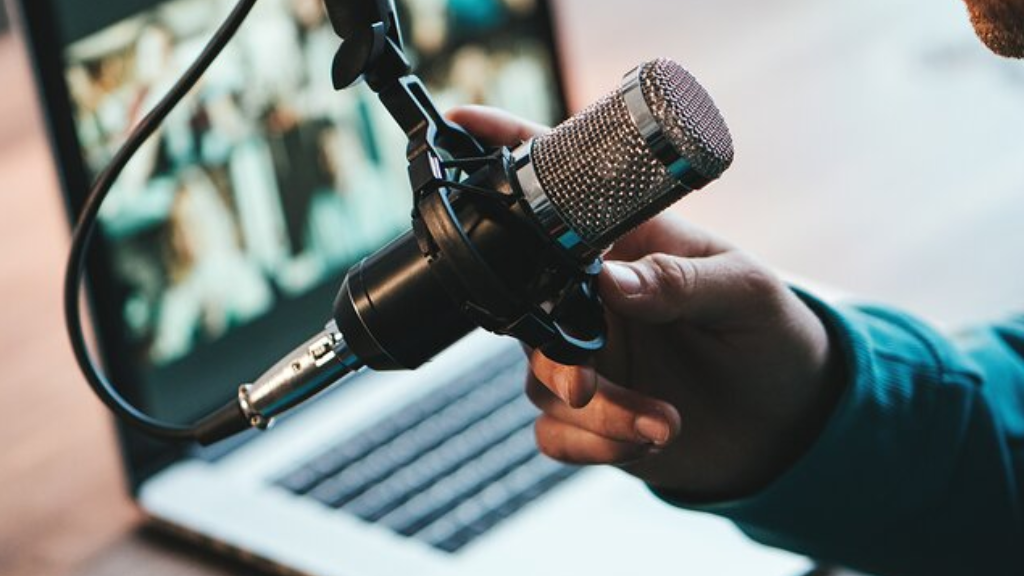
Is your PC or laptop’s microphone picking up background noise Even though you haven’t given it any special permissions? In this post, we’ll look at ways for fixing the problem, as well as remedies for a few other microphone-related issues you could be having on your Windows device.
How To Reduce Background Noise on Microphone?
We’ve included techniques below that you may attempt to reduce background noise on mic:
How to reduce background noise on a Windows microphone?

If your Windows Microphone is picking up your sound output, several things might be causing the problem. The simplest approach to accomplish this is to use the Windows troubleshooter, which in most circumstances can both discover and solve the problem; in cases where it can’t, it can still detect the problem, and you may try to fix it manually.
Windows 10 now has a comprehensive audio troubleshooter that can examine your sound system for indicators of malfunction and suggest fixes. It’s a good method to save time and should be your first stop because the troubleshooter can detect and resolve many of the issues discussed below.
• The first step is to search for “troubleshooting” in the search box. You’ll discover an option in the results that informs you how to solve it. This is the one you should pick.
• When you’re in the prompted box, go to the Getup and Running section and select the option that reads Playing Audio. ‘Run the Troubleshooter’ should be selected.
• On the computer’s screen, a new icon will appear. By choosing it, you may open a new window. By selecting it, you may now try to fix various types of linked speakers, such as built-in speakers, microphones, and headphones. Select Next when you’re finished.
• You may run the troubleshooter right now and get an analysis. The troubleshooter can discover the source of your driver issues and provide advice on how to resolve them. Try what it advises to see if it solves your problem with the Microphone in Windows picking up all of your sound outputs.
Modify the microphone’s settings
Check your microphone settings to see if that’s the issue. To alter or edit your microphone settings on Windows, follow the instructions below:
• In the Windows Start Search box, type Sound, then touch on Click Sound. After that, go to the Under Recording tab and right-click on a blank area on the screen.
Show unconnected devices are selected, followed by Show Disabled devices. Select Microphone and then Properties to ensure that the Microphone is turned on. Disable the Microphone as the default sound output if it is on.
Install the latest audio drivers
One of the most typical causes of sound difficulties with the Microphone is poor communication between Windows 10 and your sound card, which includes the difficulty of it picking up sound outputs. You may make your sound gear compatible with Windows 10 by following these instructions. All you need are the necessary upgrades to finish the task.
• A search for “device management” may be found in the Start menu. To locate it, click on the result.
• Inside the device manager, you’ll discover a selection of icon options. From the list of choices, select Sound, Video, and Game Controllers. There’s a chance you have a sound card, which will show up in this scenario.
• If you double-click the sound card, the Driver tab will appear, allowing you to update the driver. This will launch an automated Windows search to discover and download driver updates.
• Restart your computer when the update is complete to see whether your microphone is still picking up sound outputs.
There are a handful of other things to consider:
• Windows may not always be able to discover the appropriate audio drivers on its own.
It’s possible that Windows won’t always be able to find the right audio drivers on its own.
• If you can’t find what you’re searching for in the search, go to the sound card manufacturer’s website to learn how to manually download the updates.
• If upgrading the driver does not resolve the issue, open Device Manager, locate your sound device, and right-click the icon. Your driver will be uninstalled as a result of this. If you restart your computer, Windows will attempt to delete the driver. Allow it to do so, and the issue will most likely be resolved.
Start the audio services again.
Is your default audio not working at all, or does it have major configuration difficulties that you can’t seem to solve? The main issue might be with how Windows operates particular services. Here’s how to change/restart those procedures rapidly.
• Go to the Services app and open it. After you search for “service” in the search field, the Services app will be picked.
• A long list of services will be available in the new window. By scrolling down, you’ll discover Windows Audio. Right-click on Windows Audio and select one of the offered options to restart it.
• After the restart, go through Services again; repeat the process for the Windows Audio Endpoint Builder and Remote Procedure Call. It is possible to resolve issues with your audio.
Make sure your output device is working properly.
It’s conceivable that your Microphone is set as the default output device by Windows. As a result, the Microphone picks up all of the output noises. To ensure that Windows is transmitting sound to the correct device, check your Output Settings.
• In the bottom right corner of the screen, next to the clock and calendar, is a little Up Arrow. Simply press the button.
• To access the open Sound options, right-click on the Speaker icon.
• Choose, Your Output Device is situated towards the top of the Settings menu; select it. The dropdown selection will indicate if your speakers or headphones are the proper devices. You’ll know whether the output device is set to Microphone if the output device is set to Microphone.
• While you’re there, make sure the volume isn’t zero to guarantee that the volume isn’t turned down once you’ve picked the appropriate output device.
How can you get rid of the echo in your microphone?
It’s exhausting to have to listen to everything all over again after a delay. On your PC, there are solutions to lessen mic echo, but it’s generally a problem on someone else’s end.
When making phone calls, if possible, utilize a headset
If you utilize your laptop’s built-in microphone and speakers, unwanted echo is mainly generated by your microphone picking up noise from your computer’s speakers. When you use headphones, the chances of your microphone picking up that sound are considerably decreased.
Make sure the sensitivity of your microphone isn’t too high. A sensitive microphone may take up sound coming through a headset.
If you hear something in your headphones even when you aren’t on a video conversation, you presumably have a certain Windows setting switched on. Return to the Sound area of the Control Panel’s Recording tab, double-click your device, and then go to the Listen tab to correct this.
If you tick, Listen to this device, you will hear everything from that Microphone in the specified output device. This is effective in some situations, but it isn’t going to assist you much in the long run. You’ll be able to stop hearing anything your mic picks up if you press OK after unchecking the box.
How Can You Reduce Background Noise on a Laptop or Computer Microphone?

If you’re recording noises on a laptop or desktop computer, you may go into the device and adjust the amount of background noise it picks up manually. Keyboards, the laptop fan, mouse-clicking, and other sources of background noise can all be heard while using a microphone with a laptop or desktop. Your operating system determines how you can adjust the background sound setting on your computer.
If you have a Windows machine, go to Hardware and Sound in the Control Panel. You’ll get to the recording area after selecting the Sound option, then right-click on the microphone bar. The Microphone Boost Tool is found in the Properties section’s Levels tab.
For reduce background noise, the microphone boost dial should be set all the way down. Make sure the Microphone’s setting is cranked all the way up.
After you’ve changed the microphones under the Enhancements tab, double-check the acoustic echo cancellation and noise suppression boxes. To check for noise, go back to the Recording menu and listen to the device.
In Zoom, Skype, or other comparable programs, troubleshoot your microphone.
It’s extremely annoying when you have a microphone problem in a chat app. If you’ve followed all of the procedures but still have microphone issues, the problem might be with the audio settings.
To access the settings, go to the right side of the screen and click the Gear symbol.
You should be able to watch the Input Level changing beneath the Microscope as you talk. To record yourself, go to Test mic and listen to the results. If you need to change your mic input, utilize the page’s Dropdown button.
Reduce Background Noise when using Software like Zoom

When utilizing Zoom, there are additional settings that might cause your mic to clip in and out. It’s convenient to have the microphone level automatically changed so you don’t have to fiddle with it whether you talk loudly or softly.
If the audio from your microphone isn’t clear, try lowering the input level on your computer.
If it becomes overly forceful, this option may cut out while you’re speaking. Instead of choosing the Auto option in Zoom, you may also reduce it.
From the left sidebar, select Voice & Video from the Setting gear at the bottom-left of the program you’re using. You may observe whether turning off Noise Suppression and Echo Cancellation makes a difference. If you disable the automated determination of input sensitivity, you can manually configure the sensitivity.
Discord Disable the Echo Cancellation feature.
If you’re on a call, be sure you’re not muted. Most chat programs provide a button at the bottom of the screen that allows you to quiet your microphone. If you’ve muted your mic, this might lead you to believe it’s broken.
How can I get Discord to pick up game audio again?
Discord is a free VoIP program that serves as a fantastic digital distribution tool, particularly for gamers. If your game audio is continually picked up by Discord, it might be an issue.
Let’s have a look at the reasons and potential remedies to the problem.
What Makes Discord Recognize Game Audio?
The problem is frequently caused by certain sound settings or, in rare situations, sound drivers. As a result, the following are some of the most typical reasons for this problem:
• Sound Settings: If you choose a stereo mix for your sound settings, the output and microphone sounds will be combined with the input device. If this is the case, the in-game sound can be heard through the microphone.
• Sound Drivers: It’s possible that the right drivers aren’t installed, or that the ones that are installed are corrupted, resulting in this issue.
• Incorrect Plug-In: When the headphones are linked to the keyboard, one of the most typical reasons for the problem is. Certain issues can create this problem if the keyboard has a USB port for connecting additional devices to the plugin.
Disabling “Stereo Mix” is the first solution. One of the most basic techniques for fixing the audio picking mistake in Discord is to disable the Stereo Mix option. Furthermore, the Stereo Mix is useless while using Discord because it is only utilized to provide the PC’s input sound as output.
The procedures to disable the Stereo Mix option in both Windows Sound settings and Discord’s settings are shown below.
• Right-click the “Volume” button on the taskbar, then pick the “Sounds” option from the menu.
• A pop-up window will appear; select “Recording” from the menu.
• Locate the Stereo Mix playback device in the Recording option, right-click on it, and select “Disable.”
• Click on User Settings > Voice and Video Settings in the Discord program.
• Choose “Output Device” for your headphones and “Input Device” for your microphone.
• If your device isn’t listed under “Output or Input Device,” leave the settings alone.
Solution #2: Connecting To A Different Audio Jack
If you’ve been utilizing USB plug-ins or the audio jack that came with your keyboard, you may have run into an audio picking problem in Discord. You’ll have to put the audio jack into a different port to fix this problem.
Now you must disconnect the headphones and microphone from the keyboard and connect them to the motherboard’s connectors.
If the issue persists, it’s possible that your system is missing files or that the data are corrupted. Use the Restore Repair program to check the repositories and repair any faulty or missing data.
Solution 03: Changing Microphone Settings
Incorrect Microphone settings might potentially cause the audio picking issue. Certain configurations in the Microphone settings frequently keep the Microphone active all of the time, resulting in a mix of Output and Input sounds.
Here are the steps to changing your Microphone Settings and turning off the always-on microphone option.
• Right-click on the speaker icon on the taskbar and select “Sounds” from the menu.
• Go to the “Recording” tab on the pop-up box now.
• Locate your Microphone in the Recording tab and right-click on it to see its properties.
• Next, pick the “Listen” tab in Microphone Properties and uncheck the “Listen to this Device” option.
• Select the advanced tab and double-check the two settings under the “Exclusive” section.
• Click the Apply button to save the adjustments you’ve made in the Microphone Settings.
Solution 04: Disabling Sound Drivers
Disabling all sound drivers except the “Windows Default Driver” is another good way to solve the audio picking problem.
Follow the procedures below to deactivate the Sound Drivers.
• Right-click the Volume icon on the taskbar and choose “Sounds” from the menu.
• From the new pop-up window, select the “Playback” tab.
• Disable sound drivers such as “Realtek” and “Nvidia High Definition” in the Playback options. To disable the drivers, simply right-click on them and choose Disable.
• Now save the modifications and restart your computer to view them.
Solution 05: Uninstalling Drivers
Sometimes the installed drivers are the source of the problem, thus deleting the drivers might resolve the issue.
The following are the steps to remove the drivers:
• Open the Run prompt by pressing the Windows + R keys at the same time. To launch the Device Manager, type “devmgmt.msc” and press Enter.
• Select “Sound, Video, and Game Controllers” from the drop-down menu and right-click on the sound drivers you’ve been using, then select “Uninstall” and confirm.
• Restart your computer now to view the changes.
If the problem persists, use the Restore Repair Tool to repair and replace the corrupted drivers.
How do I stop my microphone from picking up noise?
To reduce microphone noise, make sure it’s positioned close to your mouth, in a quiet environment, and away from electronic devices causing interference. Consider using noise-canceling software or a pop filter to further minimize unwanted sounds.
Why does my mic pick up so much audio?
Your microphone may be picking up a lot of audio due to its sensitivity and the surrounding noise level. Adjust its settings to reduce sensitivity, ensure proper placement, and minimize background noise for better results. Using a noise-cancelling microphone or adding acoustic treatment to your recording space can also help reduce unwanted audio capture.
How do I stop my laptop microphone from picking up background noise?
To prevent your laptop microphone from capturing background noise, adjust your laptop’s sound settings to lower microphone sensitivity and enable noise cancellation if available. Also, try using an external microphone for clearer audio and position it closer to your mouth while keeping your recording environment as quiet as possible. Using headphones with a built-in microphone can also help reduce background noise.
How do I change my mic sensitivity?
To adjust your microphone sensitivity, right-click the speaker icon in your taskbar, select “Sounds,” go to the “Recording” tab, choose your microphone, click “Properties,” go to the “Levels” tab, and adjust the slider to change sensitivity. Alternatively, you can access microphone settings through your computer’s Control Panel or System Preferences, depending on your operating system.
Related Articles:
The Person You Are Calling Cannot Accept Calls At This Time” Causes and Reasons
